Portable power stations are becoming increasingly popular with the rise of technology and the need for reliable power sources on-the-go.
They provide a convenient and versatile way to charge electronic devices such as smartphones, laptops, cameras, and even larger appliances like refrigerators or power tools. However, one important aspect that consumers often consider before purchasing a portable power station is its longevity.
In this article, we will explore how long portable power stations last in terms of battery life and overall lifespan. We will also discuss different factors that affect their durability and ways to extend their lifespan.
What Is a Portable Power Station?
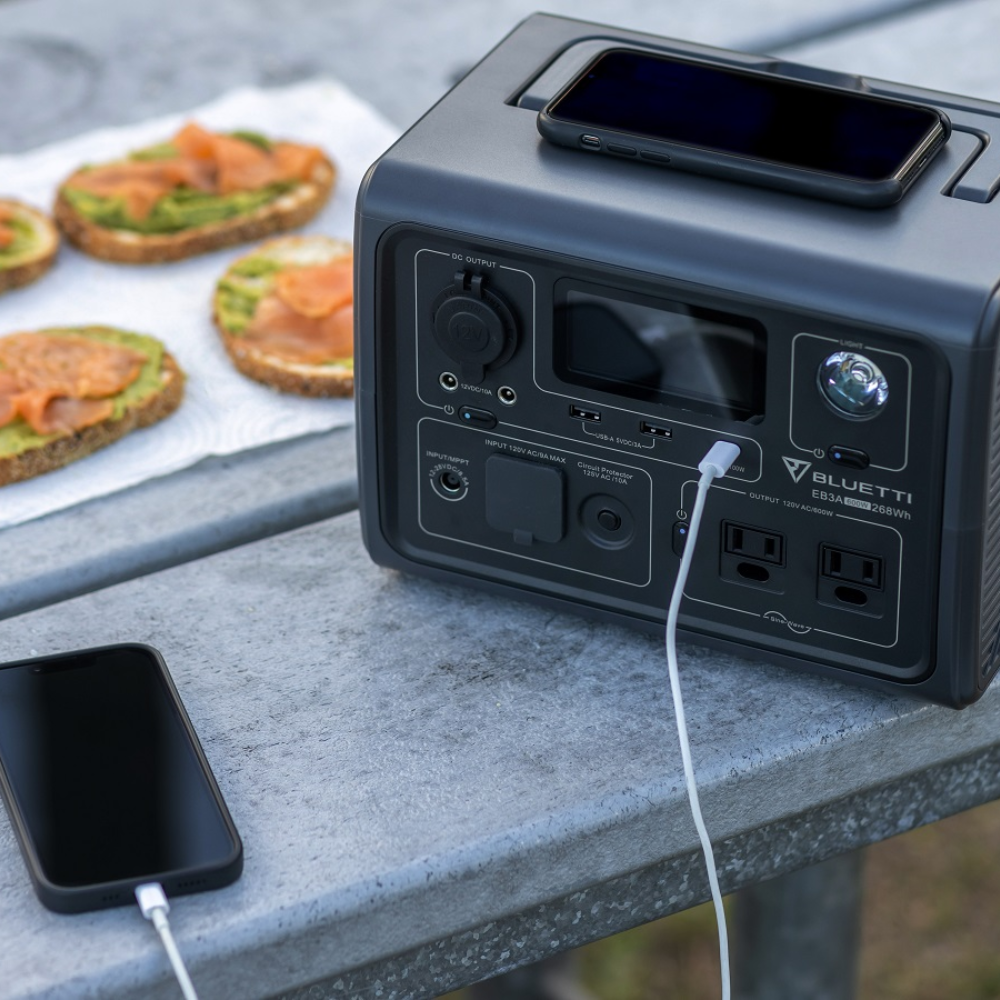
A portable power station is a compact, rechargeable battery system that provides a reliable source of electricity for various devices and applications. Often equipped with multiple output options, including AC outlets, USB ports, and DC sockets, these stations allow users to charge and power everything from smartphones and tablets to small appliances during camping trips, outdoor events, or power outages.
Unlike traditional generators, portable power stations operate quietly and without emissions, making them an environmentally friendly option for users seeking reliable power source alternatives. Additionally, they are typically lighter and more user-friendly, often featuring ergonomic designs for easy transport.
Most portable power stations use lithium-ion batteries, which can be charged via solar panels, wall outlets, or car chargers, thus providing versatility in charging methods. Some advanced models come equipped with built-in inverters, enabling them to convert stored DC power into usable AC power for a wider range of electronic devices.
Why A Portable Power Station's Battery Life Matters
Battery life is a crucial factor to consider when purchasing a portable power station. It refers to the length of time that the battery can hold a charge before needing to be recharged. The longer the battery life, the more reliable and convenient the power station will be for extended use.
The average battery life of a portable power station ranges from 500-1000 cycles, meaning it can be fully charged and discharged between 500-1000 times before its capacity starts to degrade significantly. This translates to around 2-5 years of regular use, depending on how often and how heavily the power station is used.
Several factors can affect the battery life of a portable power station, including temperature, depth of discharge, and charging methods. Extreme temperatures can decrease the lifespan of lithium-ion batteries, so it's essential to store and use the power station in moderate temperatures.
Additionally, constantly discharging the battery to its full capacity can also shorten its lifespan. Using proper charging methods and not overloading the power station can also help extend its battery life.
Factors That Affect The Lifespan Of Portable Power Stations
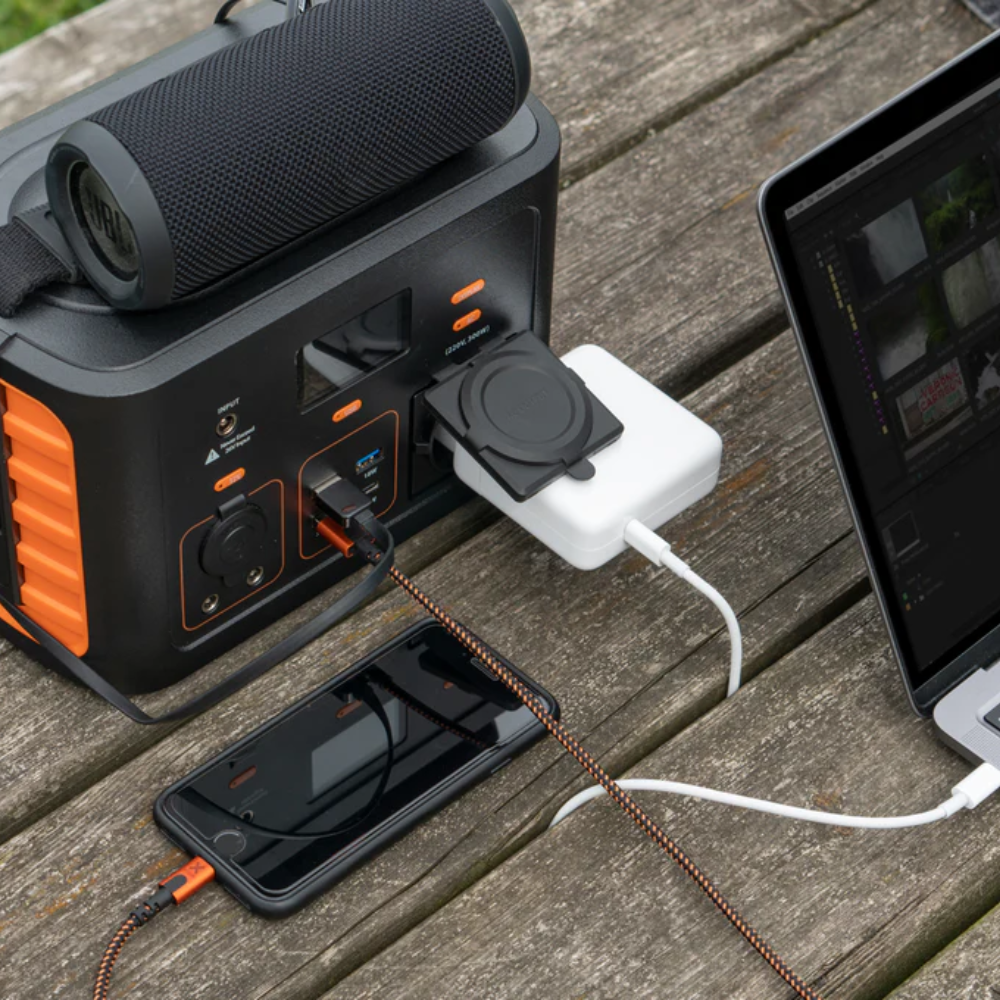
Aside from battery life, other factors can affect the overall lifespan of a portable power station. These include:
Build quality
The build quality of a portable power station plays a significant role in its overall durability and longevity. High-quality materials and robust construction can withstand the rigors of outdoor use and accidental impacts, ensuring the unit remains functional over time.
Additionally, power stations with well-designed internal components can better manage heat and prevent damage during extended usage.
When evaluating build quality, it's essential to consider factors such as the type of casing, the integrity of the connections, and the quality of the internal battery management systems. Investing in a well-built portable power station not only enhances its lifespan but also provides peace of mind during critical power needs.
Brand reputation
The reputation of a brand can significantly influence the choice of a portable power station. Established brands often have a proven track record of quality, reliability, and customer satisfaction, offering users confidence in their products.
Brands that are well-reviewed typically invest in research and development, leading to better designs, improved technology, and enhanced features. Moreover, reputable brands usually provide robust warranties and customer support, making it easier for consumers to address any issues that may arise.
Additionally, exploring customer reviews and feedback can provide valuable insights into real-world performance and reliability. Choosing a portable power station from a trusted brand can ensure a better overall experience and possibly a longer-lasting product, ultimately proving to be a wise investment for users seeking dependable power solutions.
Frequency and intensity of use
The frequency and intensity of use can significantly impact the lifespan of a portable power station. Heavy or constant use can cause wear and tear on internal components, leading to a shorter overall lifespan.
On the other hand, infrequent or light usage may result in battery degradation from not being fully discharged and charged regularly. Striking a balance between using the power station enough to keep its battery healthy but not overworking it is essential for extending its lifespan.
Also, the type of devices and appliances being powered by the station can affect its battery life. High-power devices such as refrigerators or microwaves will drain the battery faster, while smaller devices like smartphones or laptops may have less impact.
Maintenance and care
Regular maintenance and proper care can also contribute to prolonging the lifespan of a portable power station.
Keeping it clean and free of debris, storing it in a dry and moderate temperature environment, and following manufacturer's instructions for storage and usage can all help extend its lifespan.
Additionally, periodically checking the connections and internal components for any damage or wear can prevent potential issues from worsening. Proper care also includes using the power station within its recommended capacity to avoid overloading or overheating.
Environmental conditions
Environmental conditions such as extreme temperatures, humidity levels, and exposure to sunlight can affect the lifespan of a portable power station. High temperatures can cause battery degradation, while low temperatures can decrease its overall performance.
Humidity levels can also impact the internal components of the station, potentially leading to rust or corrosion over time.
Avoiding direct exposure to sunlight and storing the power station in a cool, dry area can help mitigate these environmental factors' effects.
Type of battery used
The type of battery used in a portable power station can also impact its lifespan.
Lithium-ion batteries are commonly used due to their high energy density, but they also have a limited number of charge cycles before their capacity degrades significantly. On the other hand, lead-acid batteries may have a longer lifespan but are bulkier and heavier, making them less ideal for portability.
When considering a portable power station, it's essential to research and understand the type of battery being used and its expected lifespan. This can help users make informed decisions based on their specific power needs.
Charging and discharging methods
Proper charging and discharging methods can significantly impact a portable power station's battery life. Overcharging or completely draining the battery frequently can lead to degradation and shorten its overall lifespan.
Ensuring the power station is fully charged before use, avoiding leaving it plugged in for extended periods, and not using it until it's almost completely drained are all recommended practices for preserving its battery life.
So these are the top factors that can affect the lifespan of a portable power station. By understanding and considering these factors, users can make informed decisions when purchasing, maintaining, and using their power stations, ultimately ensuring they have a reliable source of power for all their needs. So keep in mind these points and choose wisely to get the most out of your portable power station.
Can A Portable Power Station Run A Refrigerator
This is the common question can a portable power station run a refrigerator that many people have when considering purchasing one. The answer is yes, a portable power station can run a refrigerator, but it depends on various factors.
Firstly, the size and capacity of the power station matter. A larger power station with a higher wattage output will have no problem running a mini-fridge or even a full-sized refrigerator. However, smaller power stations may not be able to handle the high energy demand of refrigerators.
Secondly, the type of battery used in the power station plays a significant role. Lithium-ion batteries are known for their high energy density and can handle high loads, making them suitable for powering refrigerators. Lead-acid batteries, on the other hand, may struggle with the high startup current required by some refrigerators.
Lastly, how long the power station can run the refrigerator depends on the battery capacity and the fridge's energy efficiency. It's essential to consider these factors when determining if a portable power station can sufficiently run a refrigerator.
Mistakes That Can Damage A Portable Power Station
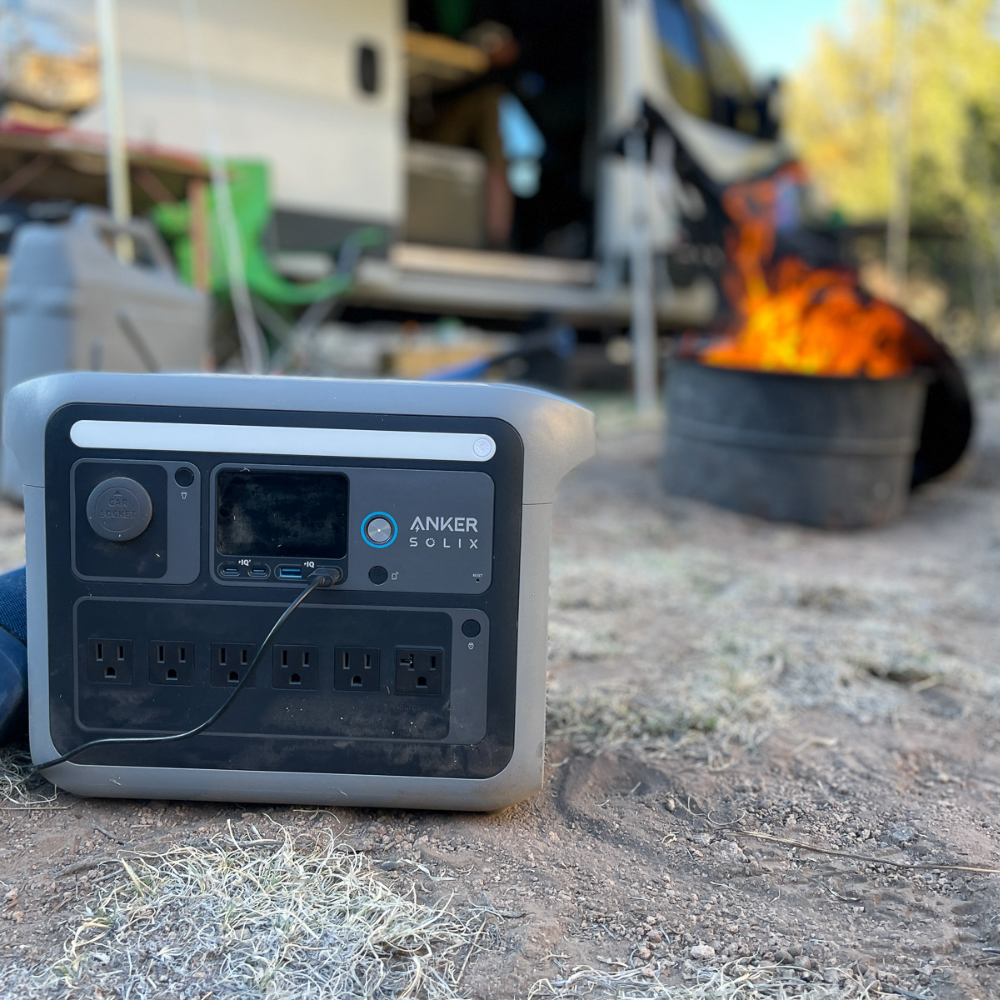
While portable power stations are designed to be durable and reliable, there are still some mistakes that can damage them. Here are some common mistakes to avoid to ensure the longevity of your power station.
- Overloading: Exceeding the power station's recommended capacity can cause internal components to overheat and potentially damage them. Also, using high-power devices like hair dryers or microwaves can overload the battery.
- Leaving it unused for extended periods: Not using the power station for a long time can cause its battery to deteriorate and lose capacity. It's best to use the power station regularly to keep its battery healthy.
- Not following charging instructions: Different portable power stations may have different charging methods, and not following them correctly can damage the battery or internal components.
- Using it in extreme conditions: As mentioned before, environmental conditions such as extreme temperatures or humidity levels can impact the lifespan of a power station. Avoid using it in these types of environments if possible.
- Dropping or mishandling: While portable power stations are designed to be durable, rough handling can still damage internal components and affect its overall performance.
By avoiding these mistakes and following proper care and usage guidelines, you can ensure your portable power station lasts for a long time, providing reliable power whenever needed. So, take care of your power station to get the most out of it.
Is It Safe To Leave A Portable Power Station Charging Overnight
The short answer is yes; it is safe to leave a portable power station charging overnight. However, there are some considerations to keep in mind.
Firstly, ensure that the power station's battery and charging system are in good condition. If there are any signs of damage or malfunction, do not leave it charging unattended.
Next, make sure to use the designated charger and follow the manufacturer's instructions for proper charging methods. Leaving a power station plugged in for an extended time can cause overcharging and potentially damage the battery.
It's also essential to consider the environment where you're leaving the power station to charge overnight. Make sure it's in a well-ventilated area with no flammable objects nearby and the temperature is within the recommended range.
Lastly, it's best to avoid regularly leaving a power station charging overnight. Overcharging can degrade the battery faster, reducing its overall lifespan. It's recommended to only charge the power station until it reaches full capacity and then unplug it.
Tips for Maintaining and Extending the Lifespan of a Portable Power Station
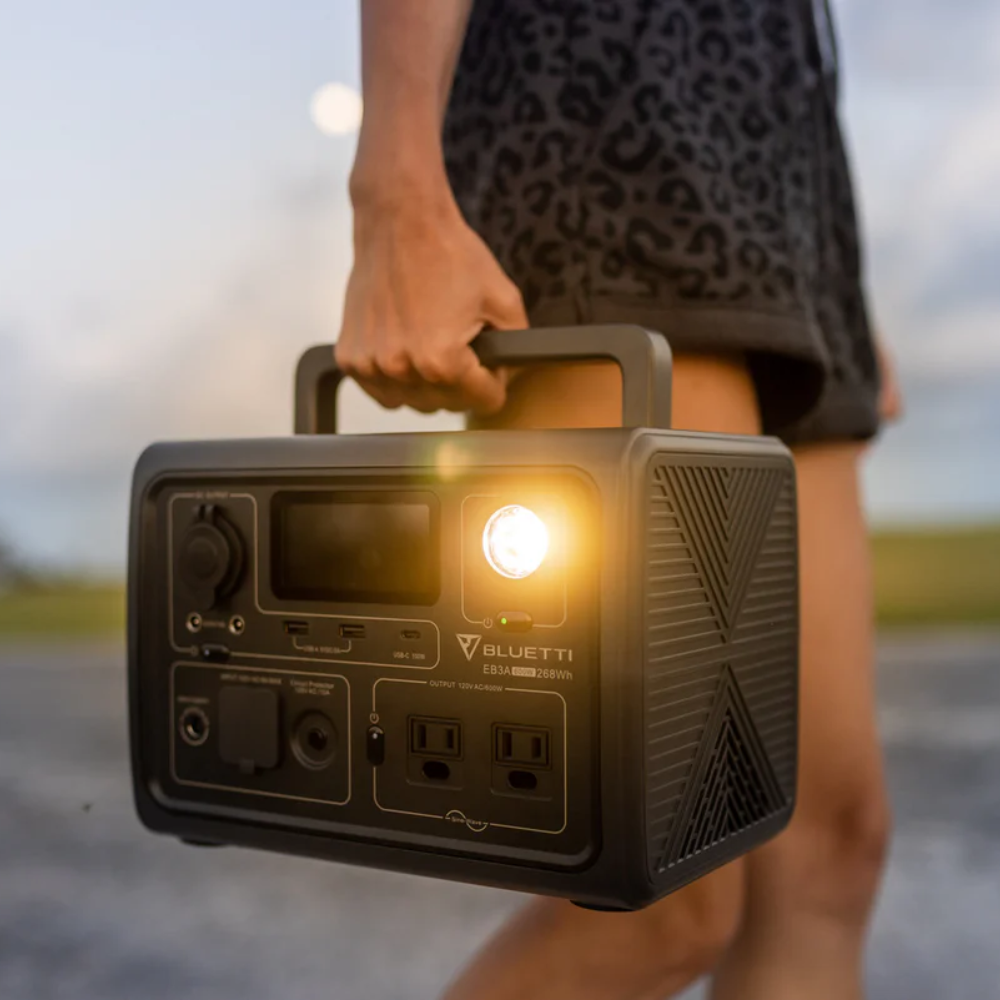
Proper maintenance is key to extending the lifespan of a portable power station. Here are some tips to help maintain your power station and make it last longer:
- Regularly use and charge the battery: As mentioned before, not using the power station regularly can cause its battery to deteriorate. It's recommended to use and charge it at least once every three months.
- Avoid overcharging or completely draining the battery: Overcharging or fully discharging the battery frequently can lead to degradation and shorten its overall lifespan.
- Keep it clean: Regularly wipe down the exterior of the power station with a damp cloth to remove any dust or debris. It's essential to keep the vents and ports clear for proper ventilation.
- Avoid extreme temperatures: Extreme heat or cold can impact the performance and lifespan of a portable power station. Keep it in a cool, dry place, and avoid exposing it to direct sunlight.
- Handle with care: Be mindful when handling and transporting the power station to avoid any damage to its internal components.
By following these maintenance tips, you can prolong the life of your portable power station and ensure it continues to provide reliable power when needed. So remember to take care of your power station for long-lasting use.
How To Choose The Right Portable Power Station For Your Needs
Choosing the right portable power station depends on your specific needs and usage. Here are some factors to consider when selecting a power station:
- Power output: Determine the wattage requirements of the devices you need to power and choose a power station with sufficient output.
- Battery type and capacity: As discussed earlier, lithium-ion batteries have a higher energy density and can handle high loads better than lead-acid batteries. Additionally, consider the battery's capacity for longer runtimes.
- Portability: If you need to use the power station on the go or for outdoor activities, look for compact and lightweight options that are easy to carry.
- Number and type of ports: Consider the types and number of ports available for your devices, such as USB, AC, or DC ports.
- Additional features: Some power stations may come with extra features like built-in LED lights or wireless charging capabilities. Decide which features are essential for your needs.
- Price: Portable power stations can range from a hundred dollars to thousands of dollars, so consider your budget and compare prices among different brands and models.
By considering these factors, you can choose a portable power station that suits your needs and provides reliable backup power whenever necessary. So, take some time to research and make an informed decision when purchasing a power station.
FAQs
How long does a portable power station last during a power outage?
The duration a portable power station lasts during a power outage depends on its capacity and the devices it powers. Some of the best portable power stations can provide reliable energy for several hours to days, depending on the usage.
How does a Bluetti portable power station compare in terms of longevity?
A Bluetti portable power station, equipped with lithium iron phosphate batteries, generally lasts longer and provides more reliable energy during power outages compared to other power banks, making it one of the best portable power stations available.
What factors affect how long a portable power station will last?
The longevity of a portable power station is influenced by its battery type (such as lithium iron phosphate), capacity, the efficiency of solar power input, and the number of devices being powered.
Are there portable power stations that last longer with solar power?
Yes, portable power stations that are compatible with solar power can last longer as they can be recharged during daylight hours. Many popular portable power stations offer solar charging options, extending their usability during prolonged power outages.
How do tested portable power stations ensure longer-lasting energy?
Tested portable power stations, such as those with lithium iron phosphate batteries, are engineered for durability and extended use. Their design focuses on providing consistent and long-lasting power, making them reliable during power outages.
What is the expected lifespan of a power bank in portable power stations?
The lifespan of a power bank in portable power stations depends on the battery technology used, with lithium iron phosphate batteries offering a longer lifespan and more charge cycles compared to other types, making them a popular choice for long-term reliability.
Conclusion
In conclusion, portable power stations are versatile and convenient devices that provide backup power in various situations. However, it's essential to use and maintain them properly to ensure their longevity and safe usage.
Also, consider your specific needs and usage when choosing a power station to get the right one for you. By following these tips and guidelines, you can enjoy reliable and hassle-free backup power whenever needed.
So invest in a quality portable power station today and be prepared for any power outages or emergencies. Happy powering!
Subscribe to our email newsletter and unlock access to members-only content and exclusive updates.
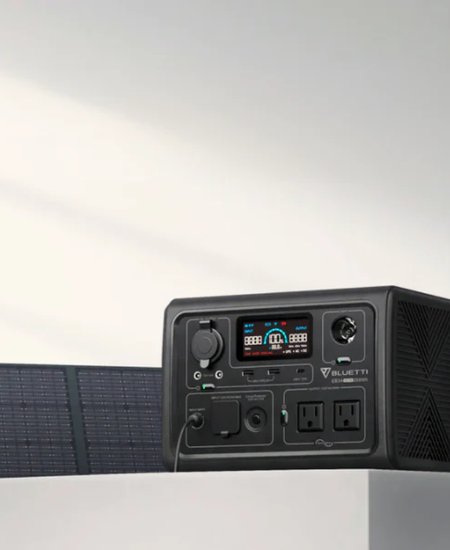
Comments